
|
|||||||

Check out our New T-shirt Line 
Click here to order new Walleye Hitch cover 
Check out our new Martha Stewart Novelty T Shirt The Ultimate Bait Scent Click here for more information 
Knife and Tool Gift Set Special Click here for more information 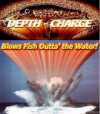
Click here to see the new Depth charge Crankbaits 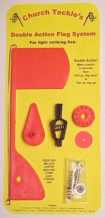
Church Tackles new Double Action Flag System Click here for more info 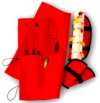
Click here to see Beckmans New Bottom Bouncer Leader and Lure Wrap Kit Promotional Team Favorites Lodging food and more 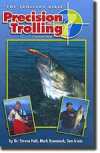
Precision Trolling Book 7th edition now on sale at Walleyes Inc Click here for more info 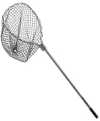
Beckman Nets Now on Sale Click here to order 
A Walleyes Inc. affiliate |
By JOHN KOLINSKI
Editor's note: John Kolinski is the 2002 Professional Walleye Trail Angler of the Year, last year's Illinois River RCL winner and a 13-time championship qualifier on the PWT, RCL and Masters Walleye Circuit. His articles can be read in numerous Midwestern outdoor publications and several web sites. Kolinski is sponsored by Triton Boats, Mercury Motors, Lowrance Electronics, Normark/Storm Lures, MinnKota, Lindy Legendary Tackle, Flambeau, Tempress Rod Holders, Off-Shore Planer Boards, Berkley Trilene, Optima Batteries and Panther Marine. Finding the "spot on the spot" is like discovering the Holy Grail ofwalleye
fishing. It's one place where, once you identify it, you can rest relatively
assured that your angling dreams will be realized. Late-summer trolling
over massive bodies of water isn't so different. However, instead of trying
to locate slight variations in a piece of structure or along a breakline,
the right spot is more often related to
is 10 feet deep, make sure you check out the 10-foot depth in the deeper, open water that surrounds it. Sometimes, water color is the key to locating these fish. Even the slightest tint or stain in clear-water lakes and reservoirs can make a big difference. Consider where the wind has been blowing and focus your efforts in places where it has left its mark. Once you’ve located these schools of fish, it’s not unusual for them to be scattered up and down the water column. It can be a frustrating situation to watch what you know to be walleye after walleye hang listlessly in the water column while you pass through them trying everything but dynamite to catch them. One problem is that these fish aren’t usually feeding actively. Late summer walleyes in big, clear waters seem to do a lot of their table work at night. However, their metabolism is working hardest when the water is warmest, so there are also brief periods during the day when they’ll become aggressive. It’s a good idea to lock in GPS coordinates on your X-19 unit any time you find a school of fish. If they all look like stationary hooks on the sonar screen, they may prove impossible to catch no matter what you do. Look for more active fish. You can always come back to work on the other fish later. If your sonar is revealing more straight, diagonally positioned lines than hooks, it probably is showing you fish that are moving through the water column. This is a situation that usually tells me to get my lures out and get after it. And, if you come across pods of baitfish with hooks and lines mixed in, you are likely looking at actively feeding walleyes. Once you’ve zeroed in on an area to fish, the next challenge is to find the precise depth at which the fish will eat. Many times, you have to put your bait right in their faces to provoke a strike.
there. One trick I’ve learned about downrigger fishing is to not rely on the traditional releases that attach to downrigger cables. More than once, I’ve hauled a walleye around the lake without even knowing it was there until I checked the line, and some of them have even been fish larger than five pounds. I’ve gone to using extremely thin rubber bands to attach my line to the downrigger release. Simply loop it around the line that goes to the bait and hook it into the release. Lower the cannon ball very slowly and you’ll be in business. Dipsey Divers aren’t as precise as downriggers, but when used with line-counter reels they can help you duplicate depths while also spreading lines away from the boat, and that can be important in clear water. I use Fireline or Berkley’s Gorilla Braid with Dipseys because it will take my presentations a few feet deeper when that’s where things need to be. Don’t be afraid to experiment with extremely long leaders behind those Dipseys. You are dealing with finicky fish and clear water, and sometimes they want nothing to do with a bait presented on a six- or eight-foot leader no matter how good it might look. I’ve fished Dipseys with leaders as long as 20 feet, which means either walking all the way to the bow of my Triton 215X while my partner nets my fish or hand-lining the fish to the boat when the fight is all but finished. Lead-core line can be used in combination with Off-Shore Planer boards for more precision depth control and more width in the spread you present. Usually, that means segmenting the lead-core line with monofilament or Fireline. The trick to this set-up is determining exactly how much leaded line is required to get into the active depth. Typically, this means monofilament backing on the reel, then anywhere from two or three to 10 colors of leaded line, then a Fireline or mono leader of 25 to 50 feet. A quality sonar unit like the Lowrance X-19 will show you what depth the fish are holding. Then it’s a matter of experimenting with combinations of lead and regular line until you find the right numbers. A good way to do that is to run two lines straight out the back of the boat. Start with a 50-foot lead and three colors of lead. If that’s not working, go to four colors, then to five, etc. Once you find a combination that’s working, you can move the rig to your Off-Shore Planer boards. Snap weights and keel sinkers both have their positive and negative points. Snap weights are clipped to the line well ahead of the lure, which is a plus in clear water where walleyes can be spooky. However, precision is more difficult to achieve because there are factors such as wind, waves, sinker weight, blade size on spinner rigs, crankbait styles and boat speed that all contribute to what depth a rig is running. You also run the risk of giving fish some slack line when you are detaching the snapweights during the fight. In-line weights offer more depth control precision and less margin for error during the main rounds of battle, but like Dipsey Divers they aren’t made to fish with long leaders. Again, you’ll have to go to the bow of the boat when you hook a fish or hand-line it when you reach the sinker. Bottom bouncers seldom figure into my open-water arsenal. There are too many other ways to get to the fish without dragging around the bulk of a bouncer. One situation where bottom bouncers are an asset is when there is a lot of debris on the bottom where snap weights might hang up. It pays to tune crankbaits and sort out productive spinner blades as you fish. A big walleye can knock a crankbait out of tune, as can a tangle in the net, and it’s nice to have another ready to go. Likewise, I like to have snap weights and spinner blades within easy reach rather than leave a half-dozen boxes of tackle scattered around the boat where they can get stepped on or tipped over. For this purpose, I keep an extra Flambeau tackle storage box around and use it as a “hot box” while I’m putting the pieces of any open-water situation together.
Please visit these site sponsors |
||||||
|---|---|---|---|---|---|---|---|